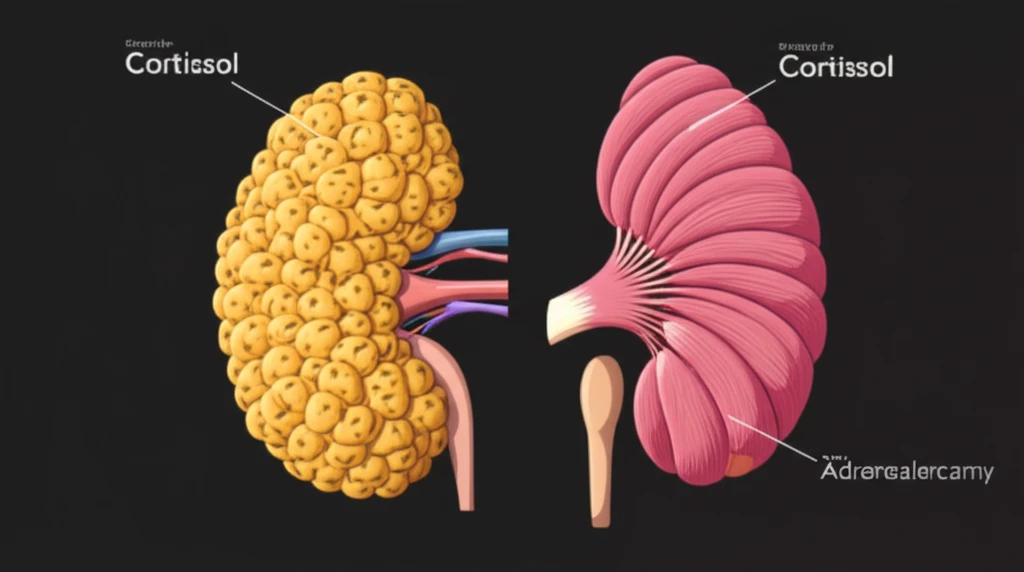
Adrenalectomy: Can This Procedure Reverse the Effects of Excess Cortisol?
"Explore how adrenalectomy impacts body composition in patients with hypercortisolism, offering hope for those seeking relief from its debilitating effects."
Chronic exposure to elevated cortisol levels, a condition known as hypercortisolism, can wreak havoc on the body. Beyond the well-recognized Cushing's syndrome, milder forms of cortisol excess also pose significant health risks. Identifying effective ways to manage and reverse the effects of this hormonal imbalance is crucial for improving patient outcomes and quality of life.
One potential treatment option is adrenalectomy, the surgical removal of one or both adrenal glands. This procedure is often considered when hypercortisolism stems from adrenal tumors. But how effective is adrenalectomy in reversing the body composition changes induced by excess cortisol, such as increased visceral fat and decreased muscle mass? Understanding the specific improvements patients can expect is vital for informed decision-making.
Recent research investigates the impact of adrenalectomy on body composition using computed tomography (CT) scans to assess changes in visceral fat, muscle area, and muscle density. By comparing patients with varying degrees of cortisol excess, the study sheds light on the potential of adrenalectomy to restore a healthier body composition.
Understanding the Study: Adrenalectomy and Body Composition

A retrospective observational study was conducted at Yonsei University College of Medicine, Severance Hospital, Seoul, Korea, between 2006 and 2017, involving 134 patients who underwent adrenalectomy for adrenal adenomas. The study participants were categorized into three groups based on their cortisol levels: overt Cushing's syndrome (CS), mild autonomous cortisol excess (MACE), and nonfunctioning adrenal tumor (NFAT). Follow-up CT scans were conducted on a subset of these patients (78 total) to assess changes in body composition after approximately one year.
- Visceral Fat Area (VFA): Fat within the abdominal cavity around the organs.
- Subcutaneous Fat Area (SFA): Fat beneath the skin.
- Skeletal Muscle Area (SMA): Area of skeletal muscle at the L3 vertebra.
- Skeletal Muscle Index (SMI): SMA adjusted for height.
- Skeletal Muscle Radiodensity (SMD): A measure of muscle quality, inversely related to fat content within the muscle.
Looking Ahead: The Promise of Adrenalectomy
This research offers valuable insights into the potential of adrenalectomy to reverse the adverse body composition changes associated with hypercortisolism. By demonstrating the link between cortisol excess and improvements in visceral fat, muscle mass, and muscle quality, the study underscores the importance of considering adrenalectomy as a treatment option for patients with adrenal adenomas and varying degrees of cortisol excess. Further prospective studies are needed to validate these findings and refine our understanding of the long-term benefits of adrenalectomy on body composition and overall health.
